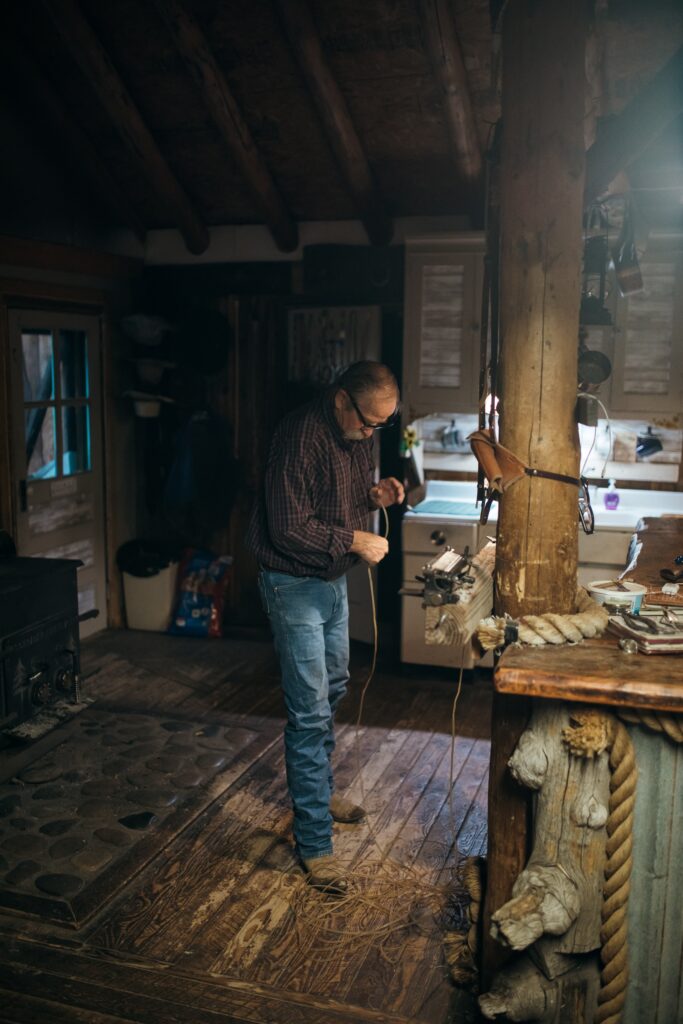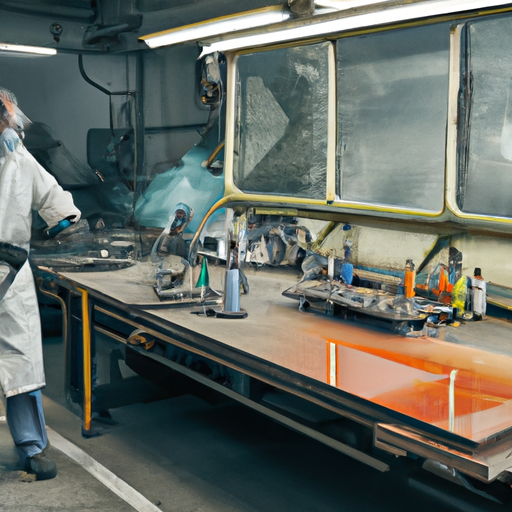If you’re a workshop enthusiast, you know the struggle of keeping your workspace clean and free from dust. Not only can dust be a nuisance, but it can also pose serious health hazards. Luckily, there is a solution – effective dust collection systems. In this article, we will explore the importance of these systems in maintaining a clean and healthy workshop environment. From their benefits to different types available, you’ll discover how they can make a significant difference in enhancing your overall workshop experience. Say goodbye to dust-related inconveniences and hello to a cleaner, safer work area.

1. Importance of Dust Collection Systems
Having a dust collection system in your workshop is crucial for maintaining a clean and safe working environment. Dust and debris generated during woodworking or other similar activities can pose serious health risks and can also contribute to equipment malfunction and potential fire hazards. Dust collection systems are designed to efficiently capture and remove dust particles from the air, ensuring the air quality in your workshop remains clean and breathable. Investing in a high-quality dust collection system not only protects your health but also helps prolong the lifespan of your machinery and keeps your workspace organized and clutter-free.
2. Types of Dust Collection Systems
2.1 Centralized Dust Collection Systems
Centralized dust collection systems are typically installed in larger workshops or manufacturing facilities. These systems consist of a central dust collector located in a designated area, which is connected to various collection points throughout the workshop via a network of ductwork. The dust collector generates a powerful suction that pulls dust and debris from individual machines or workstations, transporting it through the ductwork and into a storage container or disposal system. Centralized dust collection systems offer high efficiency and are highly effective in maintaining a clean working environment for large-scale operations.
2.2 Portable Dust Collectors
Portable dust collectors, as the name suggests, are smaller and more mobile than centralized systems. They are an excellent option for smaller workshops or for those who need to move their dust collection system between different workstations. These units are generally equipped with casters for easy maneuverability and come in various sizes to accommodate different workshop needs. Portable dust collectors are a popular choice for hobbyists and small-scale woodworking businesses due to their versatility and convenience.
2.3 Cyclone Dust Collectors
Cyclone dust collectors use centrifugal force to separate dust particles from the air stream. As the dusty air enters the cyclone, it is forced to move in a spiral motion, causing the heavier particles to be flung to the sides and deposited into a collection bin. The cleaner air is then drawn out from the center of the cyclone and released back into the workshop or directed through a filter for further purification. Cyclone dust collectors are highly efficient and effective in capturing large and heavy particles, making them suitable for industries that generate coarse or heavy dust.
2.4 Wet Dust Collectors
Wet dust collectors utilize water as the primary filtration medium to capture and remove dust particles from the air. The incoming dusty air is drawn into the collector, where it passes through a water curtain or is sprayed with water to capture the dust. The dust settles at the bottom of the collector, while the clean air is released back into the workshop or directed through additional filters. Wet dust collectors are particularly useful in industries where the dust particles are sticky, abrasive, or combustible, as the water helps to suppress potential fire hazards and traps the dust effectively.
3. Factors to Consider When Choosing a Dust Collection System
3.1 Workshop Size and Layout
Before purchasing a dust collection system, it is essential to consider the size and layout of your workshop. A larger workshop may require a centralized system with multiple collection points, while a smaller workshop may be adequately served by a portable dust collector. Understanding the dimensions and layout of your workspace will help determine the most suitable type and size of the dust collection system.
3.2 Types of Dust Generated
Different woodworking activities generate varying types of dust. Some dust may be fine and powdery, while others may be larger and shavings-like. It is important to consider the types of dust your workshop produces to ensure that the dust collection system you choose is designed to effectively capture the specific particles generated.
3.3 Airflow and Static Pressure
Airflow and static pressure are crucial factors in evaluating the performance of a dust collection system. Airflow refers to the volume of air the system can move, while static pressure measures the system’s ability to overcome resistance in the ductwork. It is important to select a system that provides adequate airflow and static pressure to effectively capture dust particles from all the collection points in your workshop.
3.4 Filtration Efficiency
The filtration efficiency of a dust collection system determines how effectively it can filter out dust particles of varying sizes. Look for systems that can filter out fine particles, as these are often the ones that pose the greatest health risks. HEPA filters are commonly used for high-efficiency filtration and are designed to capture particles as small as 0.3 micrometers.
3.5 Noise Level
Dust collection systems can generate noise during operation, which may be a concern for those who value a quiet working environment. Consider the noise level of the system and choose one that meets your comfort requirements.
3.6 Maintenance Requirements
Like any other equipment, dust collection systems require regular maintenance to ensure optimal performance. Consider the maintenance requirements of the system, such as filter cleaning or replacement, and factor in the time and effort required to maintain the system properly.
3.7 Cost
Cost is always a factor to consider when investing in any equipment. Determine a budget that you are comfortable with and find a dust collection system that offers the best balance between affordability and performance. Remember that a high-quality system may require a higher upfront investment but can save you money in the long run by preventing equipment damage and improving productivity.
4. Designing an Effective Dust Collection System
4.1 Understanding Airflow
To design an effective dust collection system, it is essential to understand the principles of airflow. Airflow is measured in cubic feet per minute (CFM) and refers to the volume of air that the dust collection system can move. Proper airflow ensures that all the collection points in the workshop receive sufficient suction power to capture and transport dust particles effectively.
4.2 Determining the Required Air Volume
Determining the required air volume involves calculating the CFM needed to maintain an acceptable level of air quality in your workshop. Factors such as the number of collection points, type of dust generated, and the size and layout of the workshop all play a role in determining the necessary air volume. Consult a professional or refer to industry standards to ensure accurate calculations.
4.3 Sizing the Ductwork
The ductwork in a dust collection system is responsible for carrying the dust-laden air from the collection points to the dust collector. Properly sizing the ductwork is crucial to maintain airflow velocity and minimize pressure drop. Incorrectly sized ductwork can lead to reduced system performance and ineffective dust capture. Consult a professional or refer to industry guidelines to ensure the ductwork is sized correctly.
4.4 Placing the Collection Points
The strategic placement of collection points in your workshop is essential for effective dust collection. Ideally, collection points should be located as close to the source of dust generation as possible to capture the dust before it has a chance to disperse. Consider the workflow in your workshop and position the collection points accordingly.
4.5 Choosing the Right Filters
Filters are a critical component of a dust collection system and play a crucial role in removing dust particles from the air. Choose filters that offer high filtration efficiency and meet your specific needs based on the type of dust generated in your workshop. Regularly inspect and clean or replace filters to maintain their effectiveness.
4.6 Minimizing Air Leaks
Air leaks in the ductwork or around the collection points can significantly reduce the efficiency of a dust collection system. Minimizing air leaks helps maintain proper airflow and ensures that dust particles are effectively captured. Seal any potential gaps or leaks in the ductwork using appropriate sealing materials to prevent air loss.

5. Installation and Setup
5.1 Locating the Dust Collector
When installing a dust collection system, it is important to select an appropriate location for the dust collector. Consider factors such as noise level, accessibility for maintenance, and adequate ventilation. Placing the dust collector in a central area of the workshop can help optimize airflow and ensure efficient dust collection.
5.2 Installing the Ductwork
Proper installation of the ductwork is crucial for the overall performance of the dust collection system. Ensure that the ductwork is correctly sized, sealed, and securely supported to prevent air leakage and maintain optimal airflow. Seek professional assistance if needed to ensure proper installation.
5.3 Connecting Machines to the Dust Collection System
Each machine or workstation that generates dust should be connected to the dust collection system via appropriate hoods or collection ports. Properly connecting the machines ensures that dust particles are captured and transported away effectively. Consider using flexible hoses or retractable arms for machines or workstations that require frequent movement.
6. Proper Maintenance and Cleaning
6.1 Regular Filter Cleaning or Replacement
Regular cleaning or replacement of filters is essential to maintain the performance of a dust collection system. Dust particles gradually accumulate on the filters, reducing their effectiveness. Follow the manufacturer’s recommendations for cleaning intervals or replace filters as needed to ensure optimal filtration efficiency.
6.2 Emptying and Disposing of Dust
Periodically emptying the dust collection system’s storage container or disposal system is crucial to maintain its functionality. Avoid overfilling the containers, as this can lead to reduced airflow and potential system damage. Dispose of the collected dust properly, following local regulations and guidelines.
6.3 Inspecting and Cleaning the Ductwork
Regularly inspect the ductwork for any signs of damage, leaks, or blockages. Ensure that the ductwork is clean and free from dust accumulation, as this can impede airflow. Clean the ductwork as necessary using appropriate tools and techniques to maintain optimum system performance.
6.4 Checking and Calibrating Airflow
Periodically check and calibrate the system’s airflow to ensure that it meets the required specifications. Use an anemometer or airflow meter to measure the velocity of the air at different collection points and make adjustments as needed. Proper airflow is crucial for effective dust collection.
6.5 Lubricating Moving Parts
If your dust collection system has moving parts such as fans or motors, regular lubrication is essential to ensure their smooth and efficient operation. Consult the manufacturer’s recommendations for lubrication intervals and use appropriate lubricants.

7. Ensuring Safety and Compliance
7.1 Controlling Fire and Explosion Hazards
Dust collection systems, especially in industries where combustible dust is generated, must employ safety measures to control fire and explosion hazards. Implementing techniques such as spark detection systems, explosion vents, or suppression systems can help minimize the risk of fires or explosions. Regularly inspect and maintain these safety features to ensure their effectiveness.
7.2 Complying with OSHA and EPA Standards
Adhering to Occupational Safety and Health Administration (OSHA) and Environmental Protection Agency (EPA) standards is crucial to maintain a safe and compliant workshop. Familiarize yourself with the relevant regulations and ensure that your dust collection system meets all necessary requirements. Regularly monitor and document compliance to avoid penalties or fines.
7.3 Providing Personal Protective Equipment
While a properly designed dust collection system is essential for maintaining a clean and safe working environment, personal protective equipment (PPE) should also be provided to employees. PPE, such as respirators, safety glasses, and ear protection, helps protect against any residual dust or potential hazards that may not be captured by the dust collection system.
7.4 Training and Educating Employees
Proper training and education of employees on the safe and effective use of the dust collection system are key components of ensuring a clean and safe workshop environment. Train employees on the proper use and maintenance of the system, as well as the potential risks associated with dust exposure. Encourage open communication and address any concerns or questions related to dust collection and safety.
8. Common Challenges and Troubleshooting Tips
8.1 Insufficient Airflow
Insufficient airflow can result from various factors such as undersized ductwork, blocked filters, or inadequate suction power. Check for any potential restrictions or blockages in the system and address them accordingly. Consult a professional if airflow issues persist.
8.2 Duct Blockages
Duct blockages can occur due to dust accumulation, debris, or equipment malfunction. Regularly inspect and clean the ductwork to prevent blockages. If blockages persist, consider installing access doors or inspection points for easier maintenance.
8.3 Filter Clogging
Filter clogging is a common issue in dust collection systems and can significantly reduce their efficiency. Increase the frequency of filter cleanings or consider upgrading to filters with larger surface areas or self-cleaning mechanisms. Alternatively, install differential pressure gauges to monitor the filter’s condition and indicate when cleaning or replacement is needed.
8.4 Noise Issues
Excessive noise can be a concern in the workshop. Ensure that the dust collection system is properly installed and securely mounted to minimize vibrations and noise generation. If noise issues persist, consider installing acoustic panels or insulation to reduce sound transmission.
8.5 Equipment Malfunctioning
Equipment malfunctioning can occur due to various reasons, such as motor or fan failure, electrical issues, or improper maintenance. Regularly inspect the equipment for any signs of damage or malfunction and address any issues promptly. Consult a professional if needed to diagnose and repair equipment malfunctions.

9. Benefits of Effective Dust Collection Systems
Investing in an effective dust collection system offers numerous benefits for both the workshop and the individuals working within it. These benefits include:
- Improved air quality, reducing the risk of respiratory issues and allergies.
- Extended lifespan of machinery and equipment, leading to cost savings.
- Enhanced safety by minimizing fire and explosion hazards.
- Reduced cleaning and maintenance time, resulting in increased productivity.
- Compliance with regulatory standards, avoiding penalties or fines.
- Organization and cleanliness in the workshop, creating a more professional and efficient working environment.
10. Conclusion
Maintaining a clean and safe workshop environment is essential for both the well-being of individuals working in the space and the longevity of equipment and machinery. Effective dust collection systems play a vital role in achieving these goals by capturing and removing dust particles from the air. By considering factors such as workshop size, dust types, airflow requirements, and safety compliance, you can choose and design a dust collection system that suits your specific needs. Regular maintenance, proper installation, and adherence to safety regulations further ensure the system’s efficiency and longevity. With the benefits of improved air quality, equipment longevity, and increased productivity, investing in an effective dust collection system is a wise decision for any workshop.


